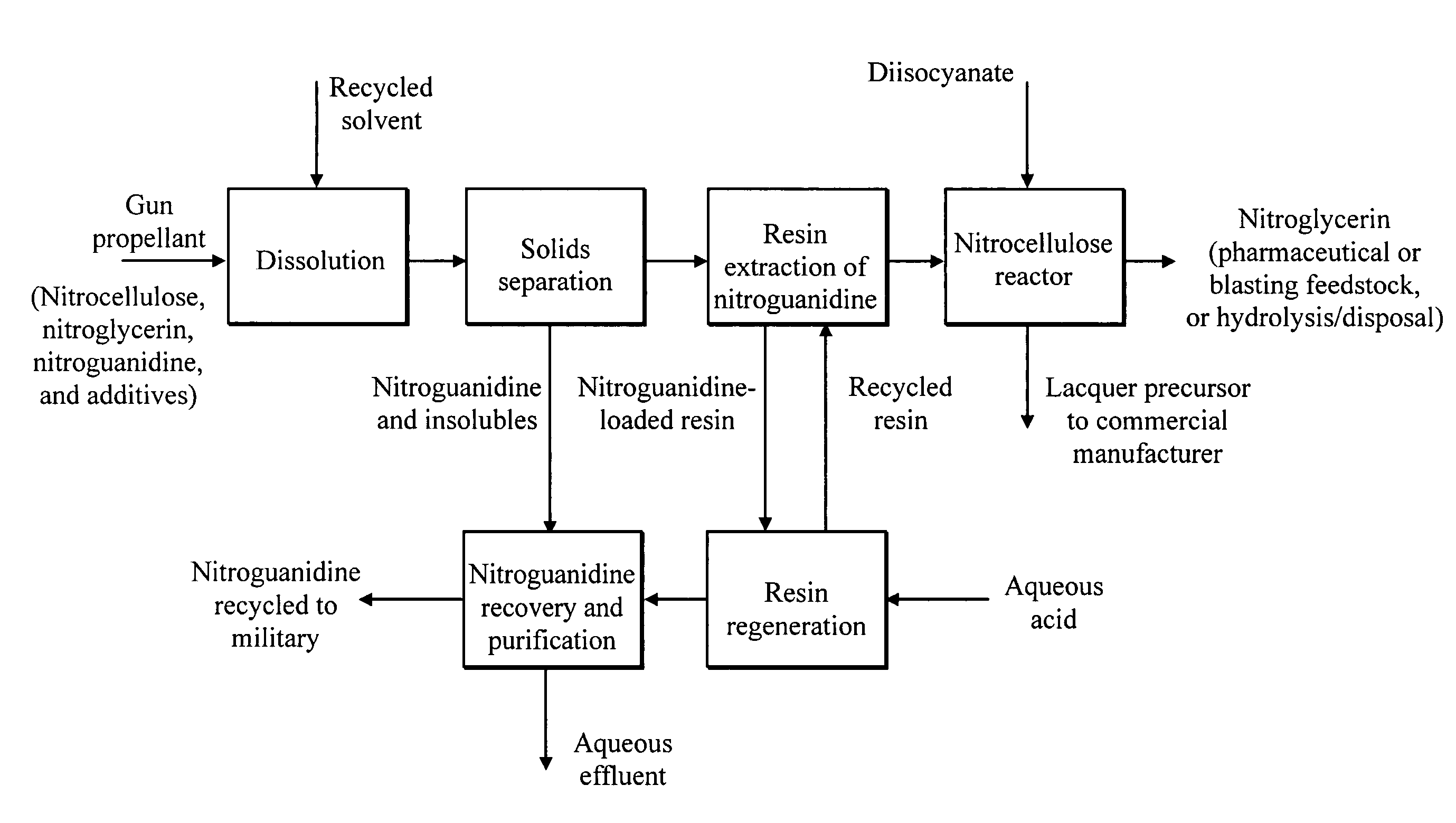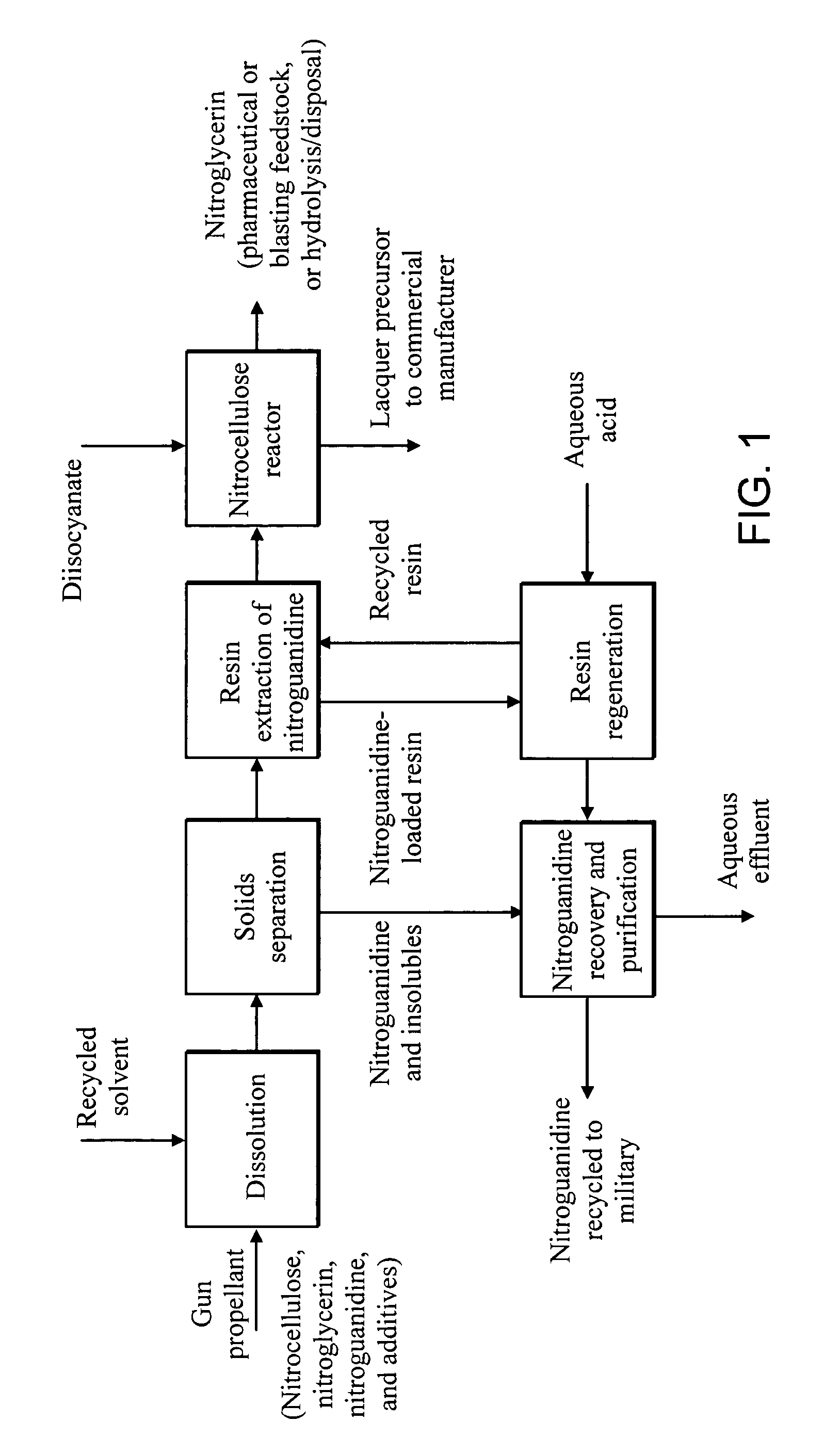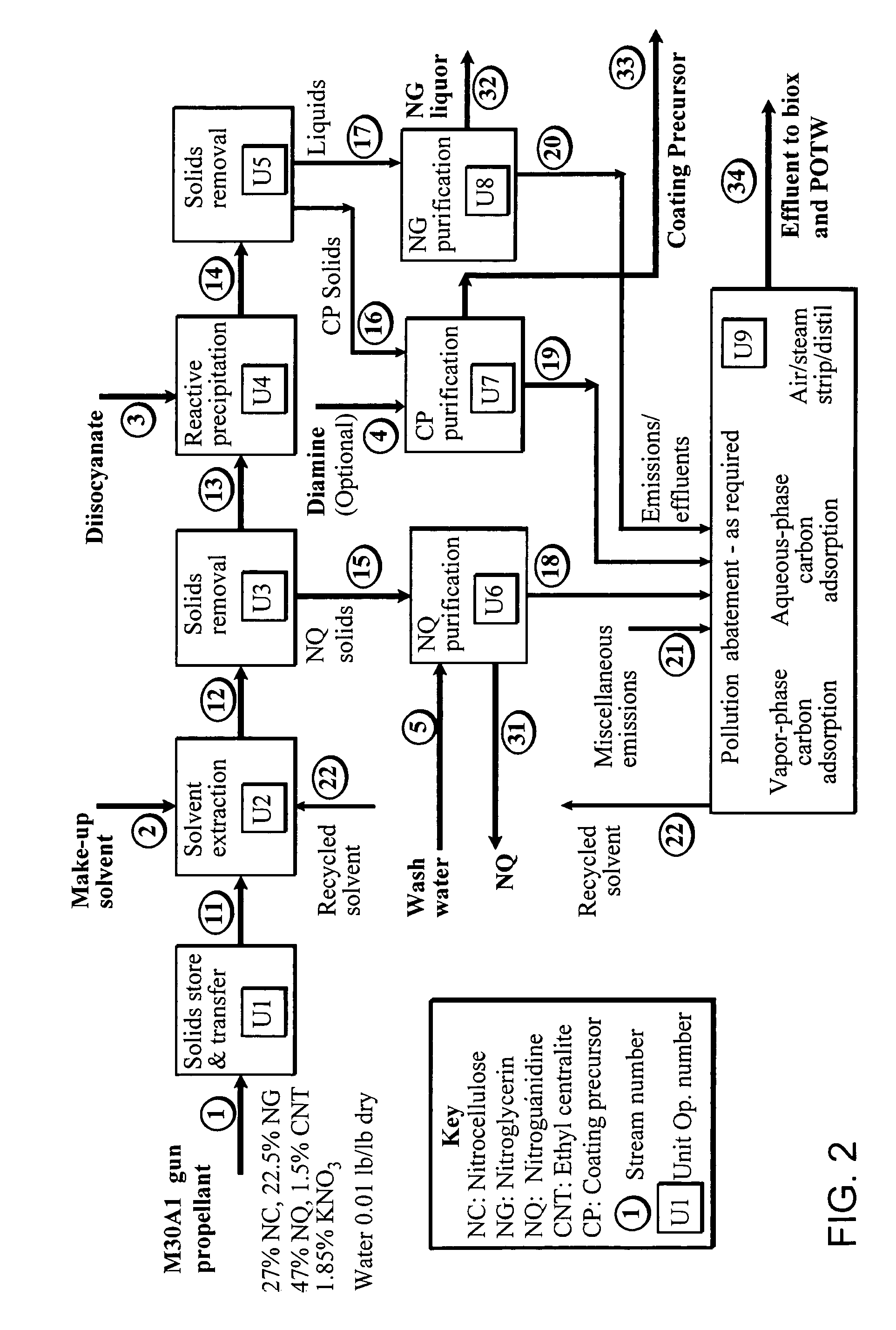Process of separating gun propellant components and useful byproducts thereof
a technology of gun propellant and byproducts, which is applied in the preparation of isocyanic acid derivatives, furnaces, explosions, etc., can solve the problems of reducing this obsolete surplus, contributing to pollution, and traditional means of open burning, open detonation or dumping are not acceptabl
- Summary
- Abstract
- Description
- Claims
- Application Information
AI Technical Summary
Benefits of technology
Problems solved by technology
Method used
Image
Examples
example 1
[0056]Preliminary analysis of the present methods was carried out using surrogate materials. The use of surrogates permitted a more economical and safe means of assessing each stage of the process, while also presenting a means of assessing the interaction of the reagents with individual propellant constituents. Surrogate studies were performed on pure nitrocellulose and nitroguanidine, and mixtures thereof.
[0057]Nitroguanidine was obtained from Acros Chemical as a 75% water-wetted product having a molecular weight of 104 g / mol. Nitrocellulose was obtained from Aldrich Chemical as a 70% isopropanol-wetted product having a unit molecular weight of approximately 250 g / mol and having 11.8 to 12.2% nitrogen. This product was replaced in subsequent experiments by a water-wetted version distributed by Filo Chemical for Hagedorn Company, as the presence of hydroxyl groups from the alcohol will interfere with subsequent stages of the process. HPLC acetone was obtained from Aldrich Chemical....
example 2
[0076]Analysis was carried out on an actual triple-base propellant. M30A1 was selected as the triple-base propellant of interest. Ground propellant was obtained from a United States Army stockpile. This material is processed using the methods described in the preceding sections for each stage of the process.
[0077]Reagents for each stage of the proposed process were identified for each task. Table 3 summarizes the evaluation of candidate reagents for the proposed process.
[0078]
TABLE 3Reagent EvaluationReagentCommentsAcetoneEnvironmental Impact—EPA exempt solventSafety—Fire / explosion hazardEconomics—Abundant, cost-effective,explosion proof equipment needed, but alreadynecessary for propellantsReagent Processing—No co-solvents neededBy-Products—No reaction is anticipatedproducing new materialsEthyl AcetateEnvironmental Impact—ToxicSafety—Fire / explosion hazardEconomics—Expensive solventReagent Processing—Solubility of NQ isgreater than in acetone. Will likely requiresubsequent solventsB...
PUM
| Property | Measurement | Unit |
|---|---|---|
| temperature | aaaaa | aaaaa |
| path length | aaaaa | aaaaa |
| wt % | aaaaa | aaaaa |
Abstract
Description
Claims
Application Information
 Login to View More
Login to View More - R&D
- Intellectual Property
- Life Sciences
- Materials
- Tech Scout
- Unparalleled Data Quality
- Higher Quality Content
- 60% Fewer Hallucinations
Browse by: Latest US Patents, China's latest patents, Technical Efficacy Thesaurus, Application Domain, Technology Topic, Popular Technical Reports.
© 2025 PatSnap. All rights reserved.Legal|Privacy policy|Modern Slavery Act Transparency Statement|Sitemap|About US| Contact US: help@patsnap.com



